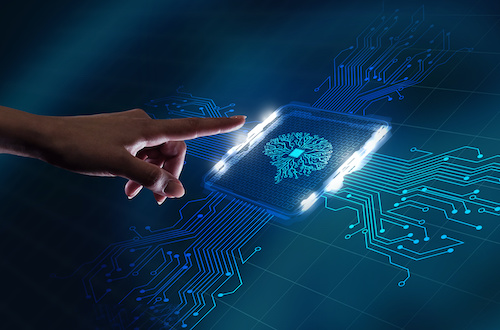Key points:
- What if AI can take over mundane tasks and free teachers up for more direct instruction?
- AI doesn’t just spit out data–it provides real, actionable insights that allow teachers to better help students
- See related article: The importance of teaching generative AI
- Everything You Need To Know About AI In Education
AI in the classroom: The idea brings up images of students plugged into the Matrix, learning differential equations in seconds, doesn’t it? Well, not quite, even if the question of existential threat for schoolchildren has been purported in recent discussions. We’re talking about something more grounded, a little less sci-fi, but nonetheless intriguing.
Imagine you’re teaching a class, and instead of that time-consuming grading, you have AI in the classroom, taking care of the rote tasks. Interesting, but not quite a blockbuster movie scenario, right? It leaves you with time to ponder the intricacies of your educational philosophy or perhaps even enjoy a quiet lunch break.
There’s talk about personalized AI tutors. No, they’re not there to replace you, the esteemed educator. They’re not going to take over the classroom, start leading field trips, or bring apples to the teacher’s desk. They’re there to supplement, to help, and maybe, just maybe, make your life a tad easier.
Now, of course, you might be worried about the soulless robots teaching our youth. What about empathy, understanding, and all the things that make a teacher more than just a knowledge dispenser? You’re right; there’s something undeniably human about education, something that a machine can’t quite replicate.
However, here’s a thought: What if these AI systems could handle some of the more mundane tasks, leaving you to explore the art of teaching, to inspire curiosity, and ignite passion? The machine takes care of the numbers; you take care of the human connection. It’s not a bad division of labor, really.
Concerns? There will be some. Security, ethical use, potential for misinformation. You could probably write a whole curriculum around the worries of AI in education, and perhaps that is something to consider. The focus here, though, is not on the alarm bells but on the possibilities, the “what ifs,” and the reasonable, practical applications.
There are no grand promises here, no utopian visions of a robotic-teacher-led educational paradise. But there is a subtle shift on the horizon, a blend of technology and tradition, a marriage of machine efficiency and human insight.
It might not be flashy, it might not make headlines, but it could make your day as an educator a little more focused on what truly matters: the students.
Speaking of focusing on students, let’s take a look at a specific example. AI algorithms aren’t exactly writing Shakespearean sonnets, but they’re doing something quite poetic in the realm of education. One of the key ways to employ AI in the classroom is through adaptive learning algorithms; analyzing each learner’s abilities, tracking progress, and, most importantly, pinpointing areas of struggle.
This individualized approach isn’t just about turning learners into coding prodigies overnight. It’s about ensuring they’re challenged at just the right level, building a strong foundation in computational thinking, brick by digital brick.
Here’s the part that might make you sit up a little straighter in your chair: AI doesn’t just spit out data. It provides insights–real, actionable insights that allow teachers to foresee potential roadblocks or hurdles that students might face and then–here’s the magic–design proactive interventions to tackle them head-on.
This proactive approach empowers educators, giving them time to focus on what makes teaching an art: understanding unique needs, building confidence, nurturing creativity, and fostering critical thinking.
The result? A harmonious blend of machine precision and human empathy, where learners are not just trained but allowed to thrive, explore passions, and hone the technology skills needed in today’s ever-digitizing world. It’s not the rise of the machines; it’s the rise of an educational approach where technology and human expertise dance together.
As for that AI-powered coffee machine in the teacher’s lounge? It’s probably not coming anytime soon, but one can dream, right? In the meantime, keep an eye on the possibilities, a measured optimism, and perhaps a touch of curiosity. The future of education is evolving, and it’s worth a thoughtful look, even if it doesn’t involve any sci-fi magic.
Related:
Is generative AI a new secret weapon, or just another gadget?
- A CTE teacher shares 8 strategies to increase student engagement - November 15, 2024
- Strategies to craft effective PD for schools and districts - November 15, 2024
- 5 ways we used our literacy platforms to engage students - November 14, 2024


